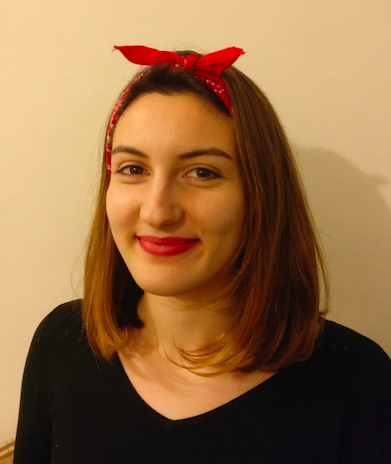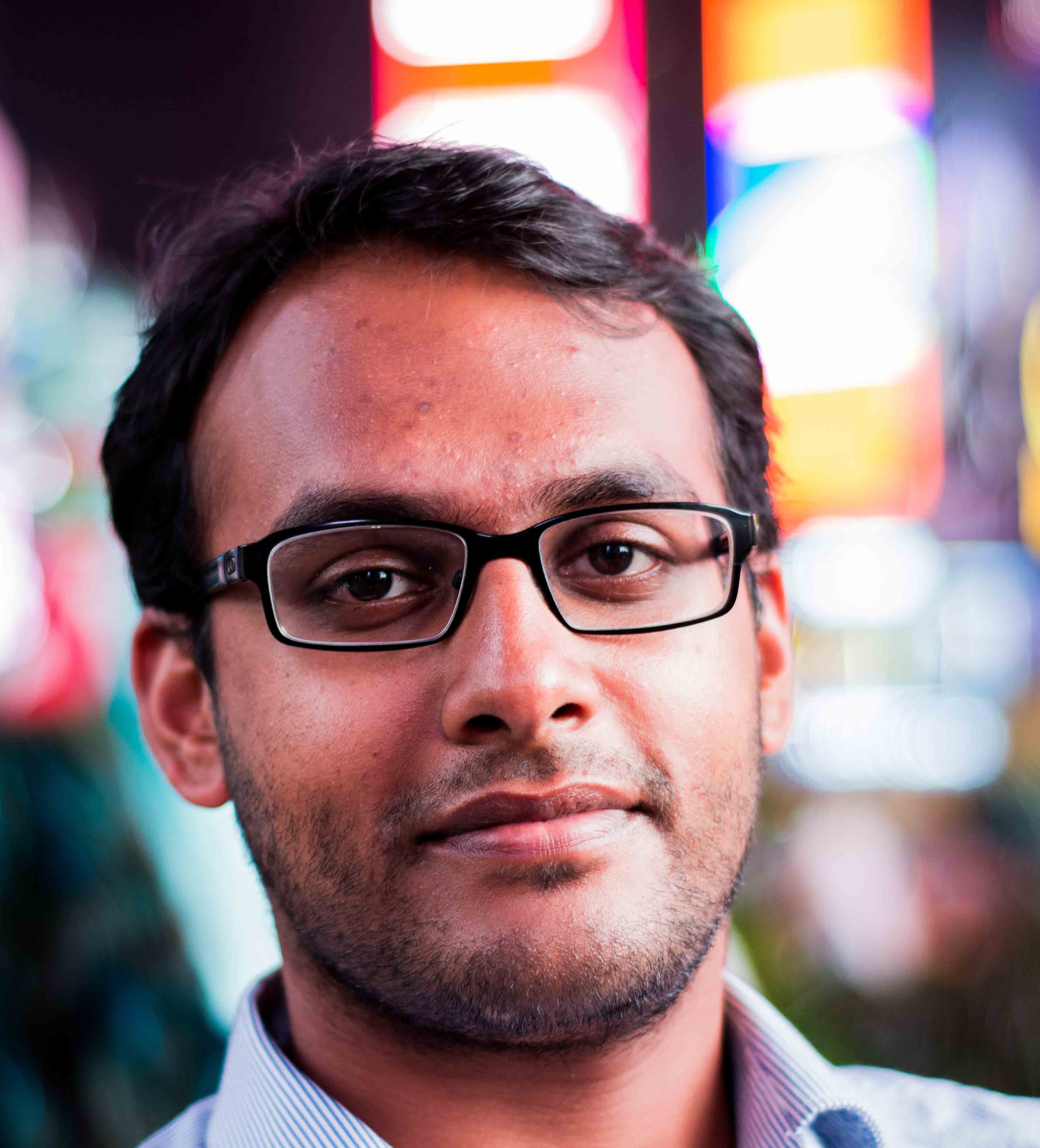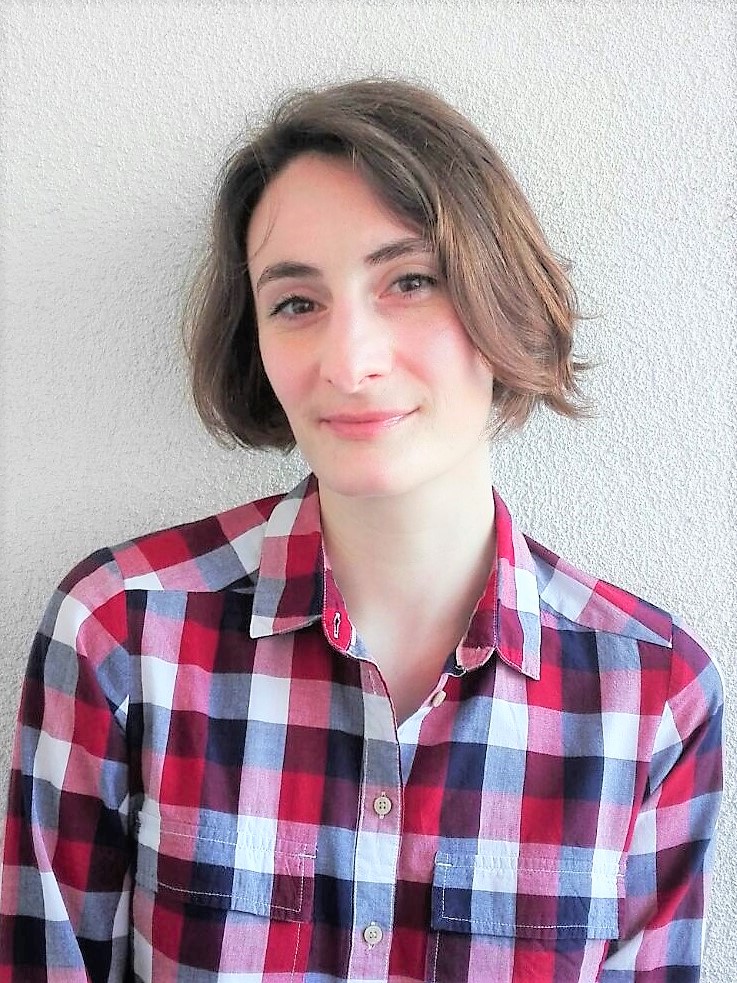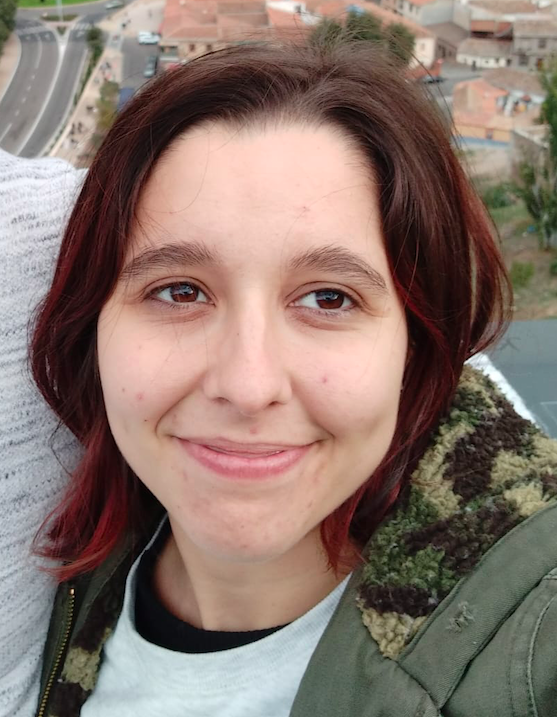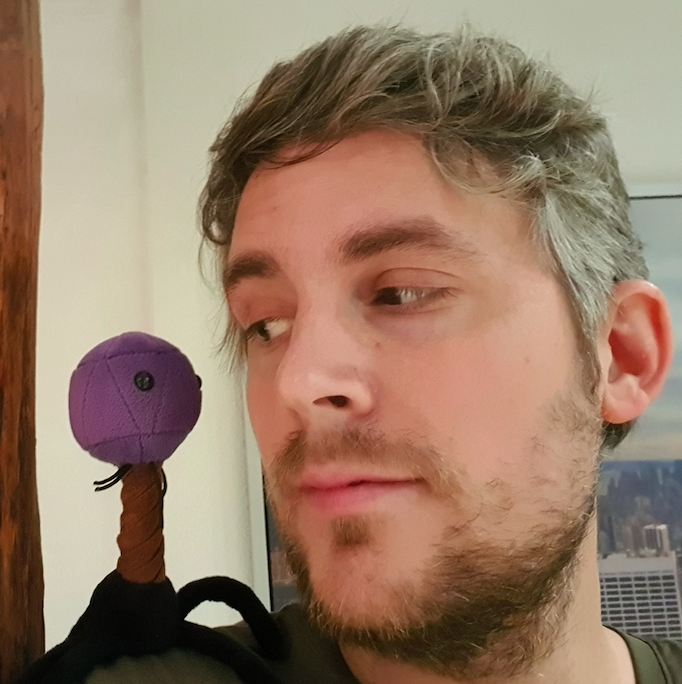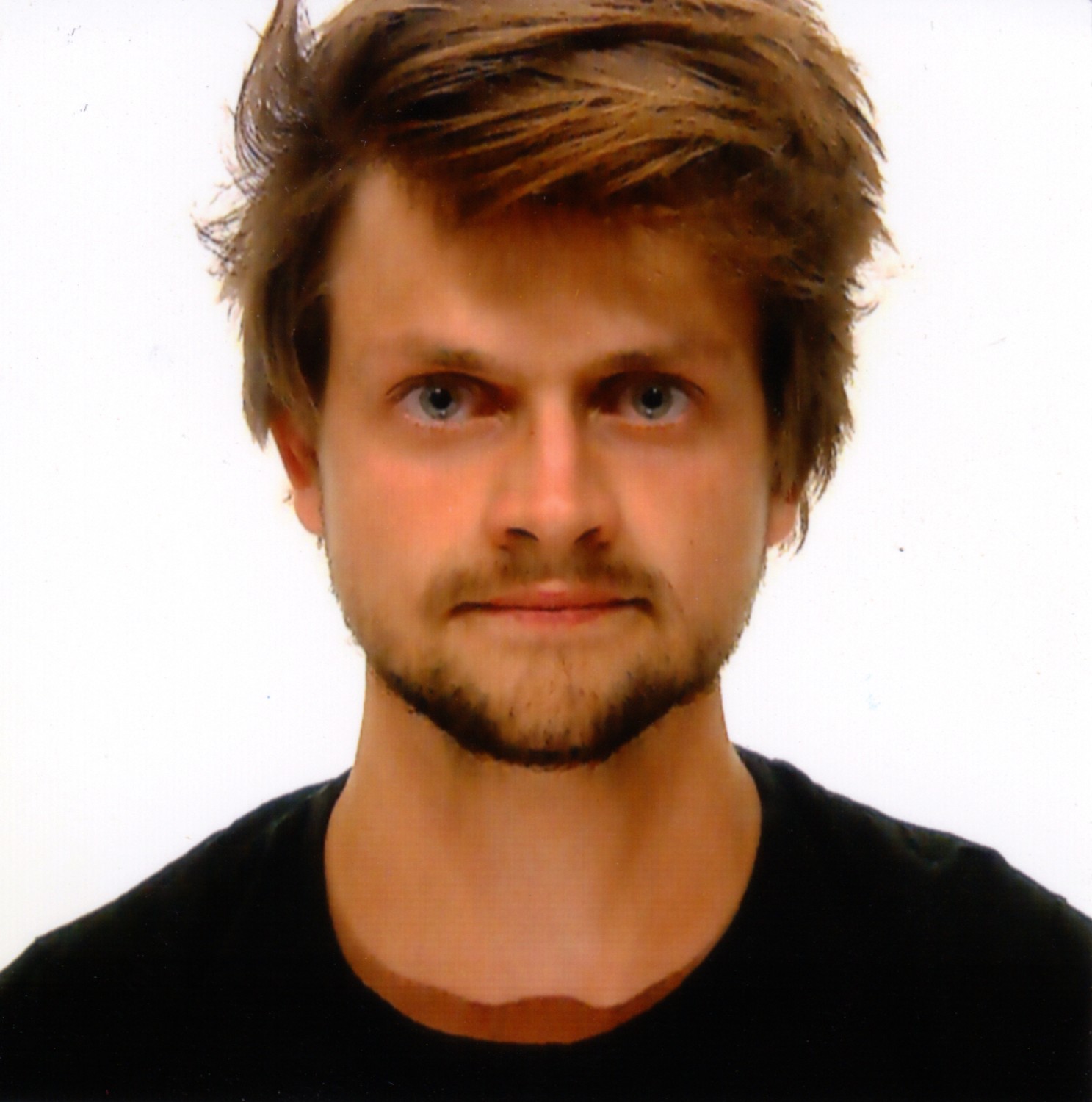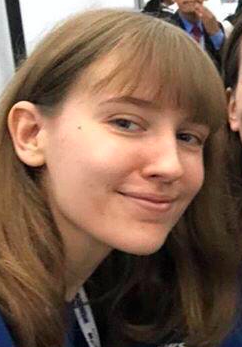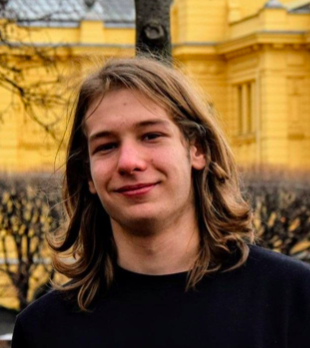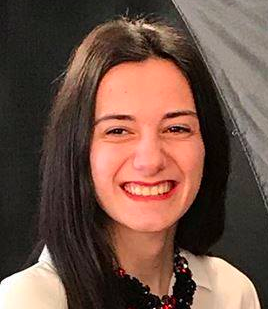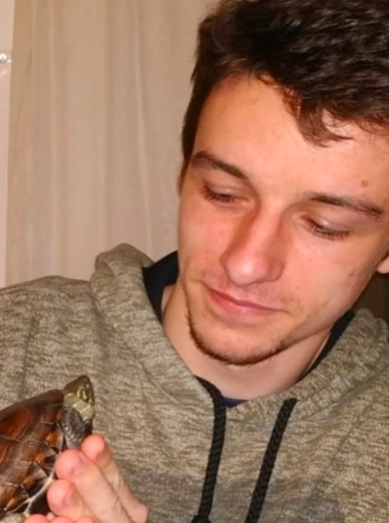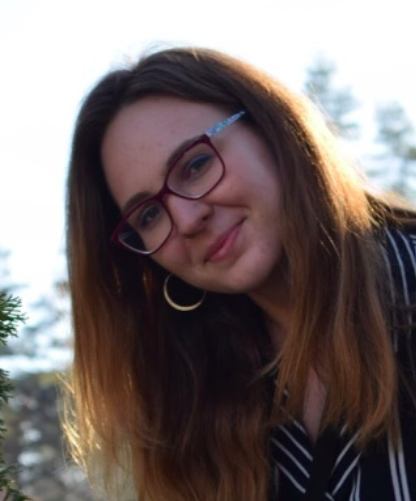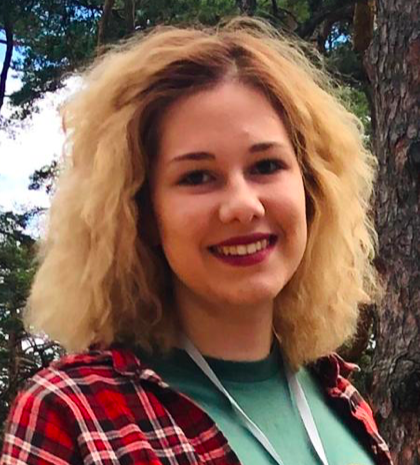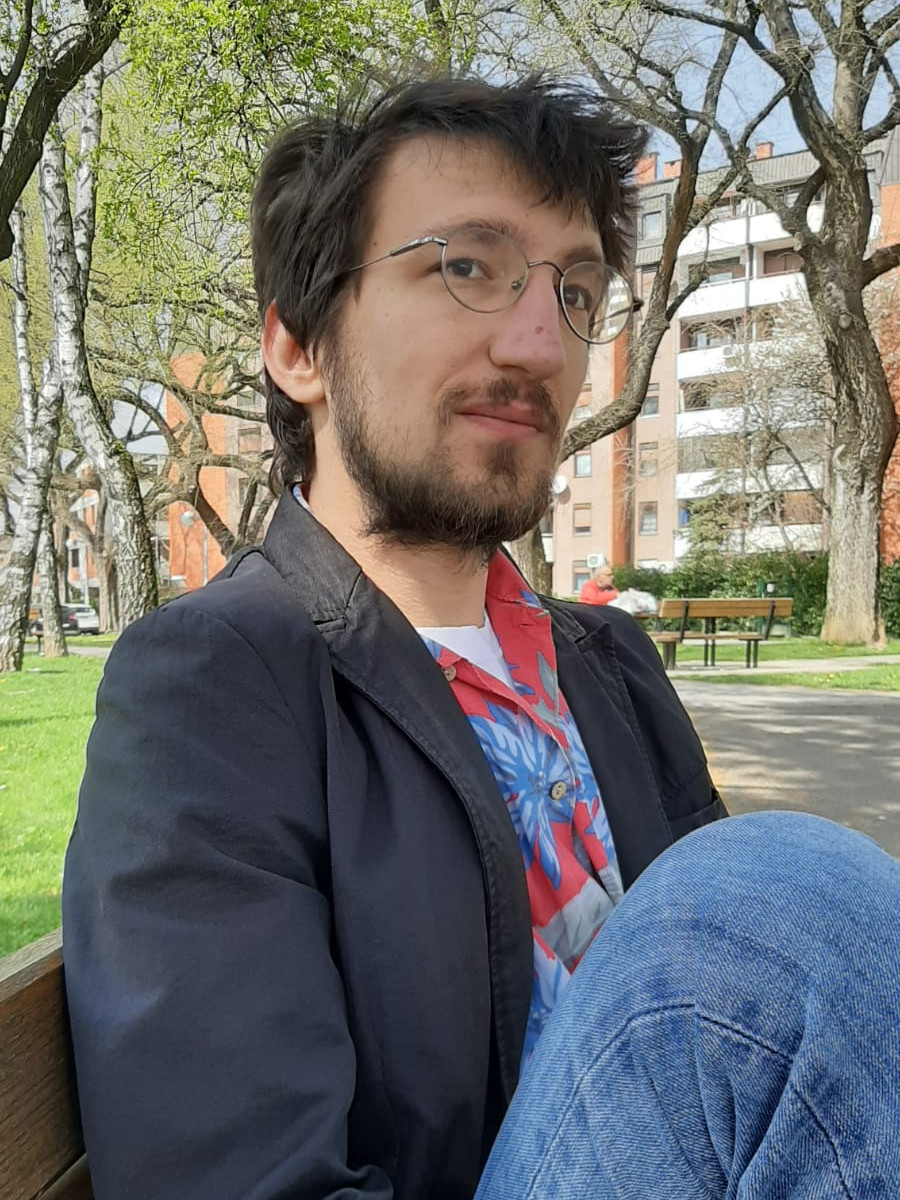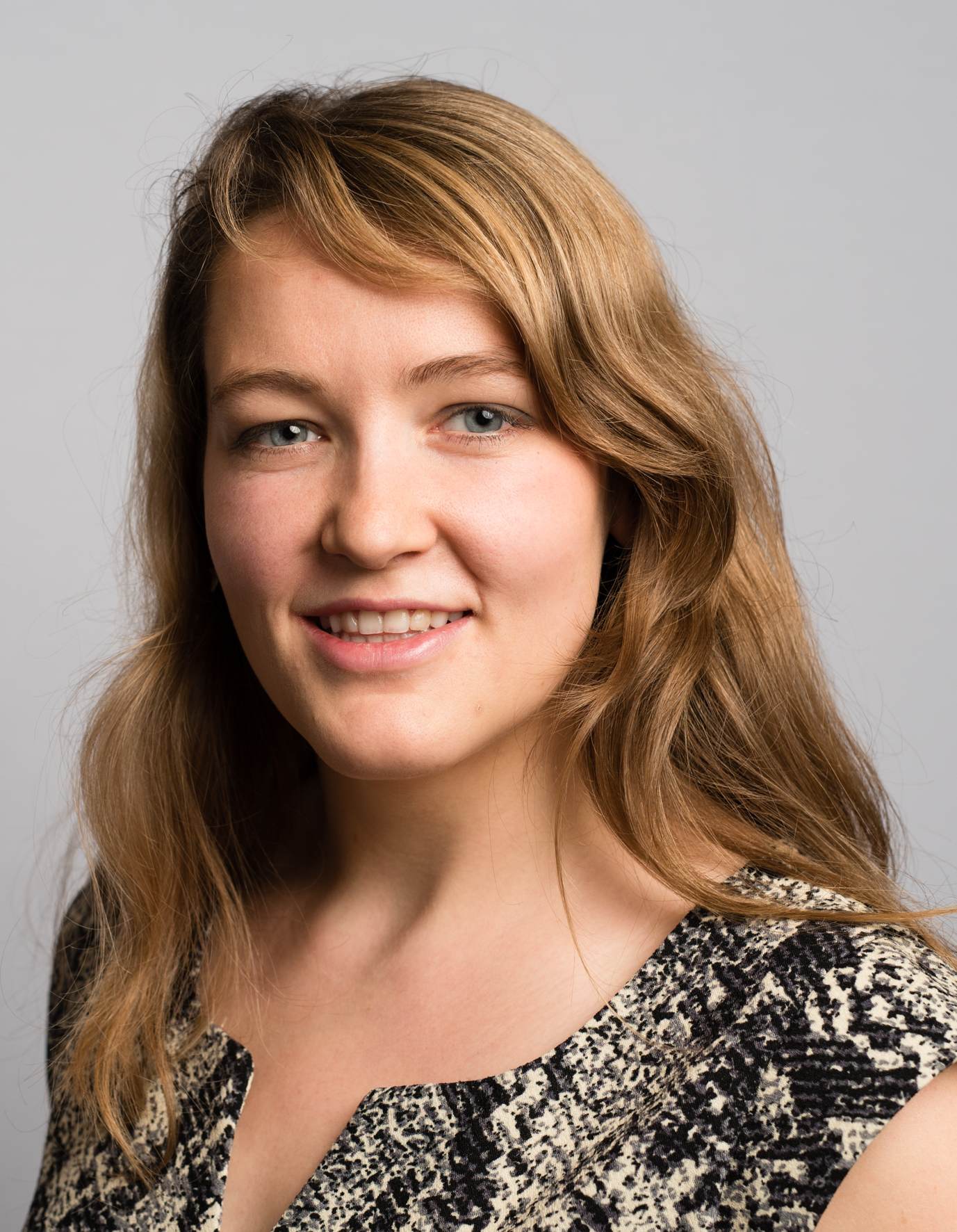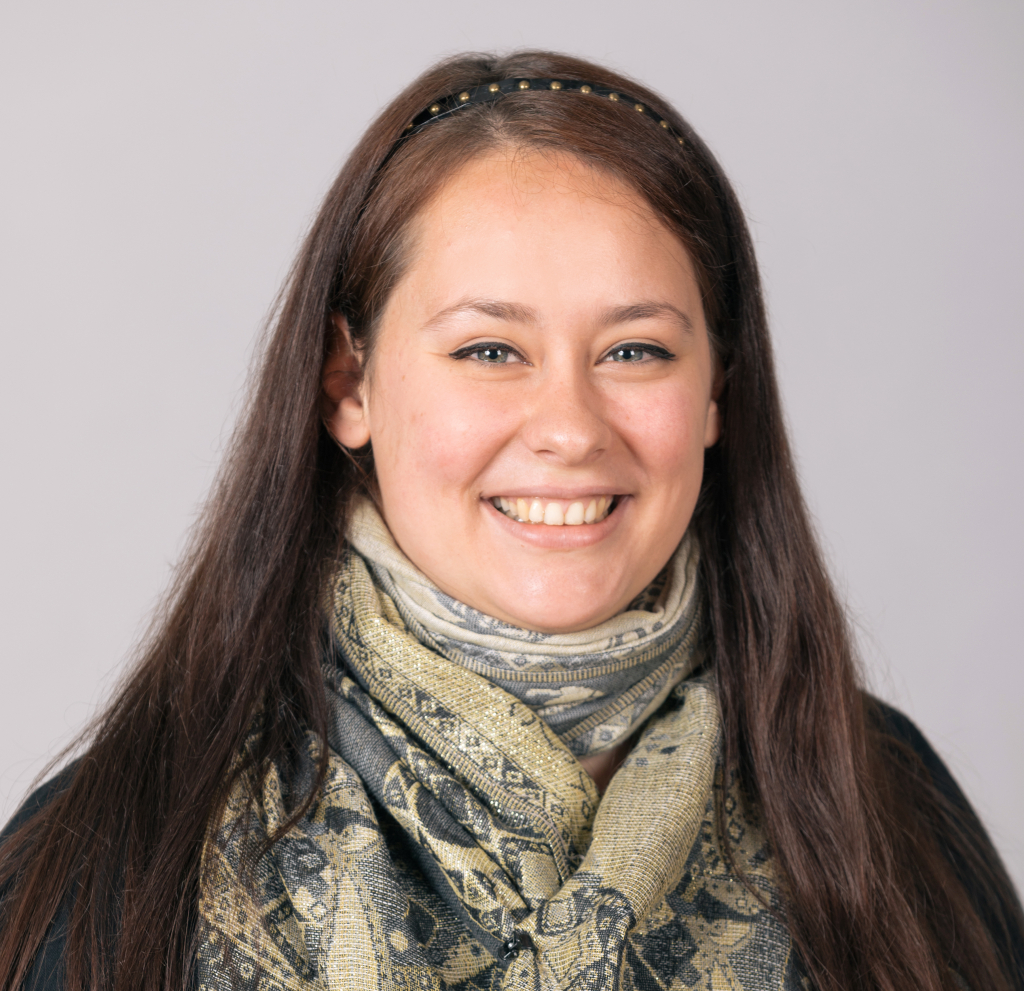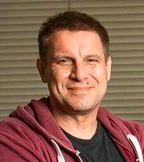Projects
Journey to the centre of the Milky Way
 Today it is common knowledge that our Milky Way is a spiral galaxy and that the universe is filled with many other galaxies. However, merely a hundred years ago this was unknown and represented the hot topic of astrophysics. Just like we once thought that all the planets revolve around the Earth, a century ago the Sun was thought to be the centre of the universe. In the first half of the 20th century, the research of an american astronomer Harlow Shapely showed a different picture of the universe. He searched for the centre of the Milky Way by studying large groups of stars called globular clusters. Thanks to him, we now know that our Sun is just one of billions of stars in our galaxy and that it is not close to the centre of the Milky Way, but on the very edge of it.
Today it is common knowledge that our Milky Way is a spiral galaxy and that the universe is filled with many other galaxies. However, merely a hundred years ago this was unknown and represented the hot topic of astrophysics. Just like we once thought that all the planets revolve around the Earth, a century ago the Sun was thought to be the centre of the universe. In the first half of the 20th century, the research of an american astronomer Harlow Shapely showed a different picture of the universe. He searched for the centre of the Milky Way by studying large groups of stars called globular clusters. Thanks to him, we now know that our Sun is just one of billions of stars in our galaxy and that it is not close to the centre of the Milky Way, but on the very edge of it.
Globular clusters are nearly spherical groups of stars that can be found orbiting the center of most galaxies. The average age of globular clusters is around 10 to 14 billion years, which makes them some of the oldest objects in the universe. As such, they can teach us not only about the universe today, but also about the universe in the past.
This research project will introduce you to real-life scientific work of astrophysicists. You will use computers to handle data collected by some of the greatest telescopes of our age and you will get a chance to find the stars you are researching on the sky above Požega. We will explore our galaxy through its clusters: we will find out how many of them are there, how they are distributed in the Milky Way, how old they are and if they are similar to globular clusters in other galaxies. Answering these questions will make it possible for you to ask new questions, expand your knowledge and reach our ultimate goal - finding the centre of the Milky Way!
Ana Erceg
Radboud University Nijmegen, the Netherlands & Ruđer Bošković Institute, Croatia
Ana is a first year PhD student at the Ruđer Bošković Institute in Zagreb where she does her research in astrophysics. The topic of her doctoral studies is the interstellar medium found in the galaxy, she aims to understand the motion of interstellar dust and gas driven by magnetic fields. Love towards science is something that she developed as a little girl, since then she has learned a great deal and know she wants to share that love and knowledge with others. In her spare time she enjoys spending time with her friends and family, playing video or board games, eating cakes (especially chocolate cakes!), and playing with her dog.
Bio-Logic-ally
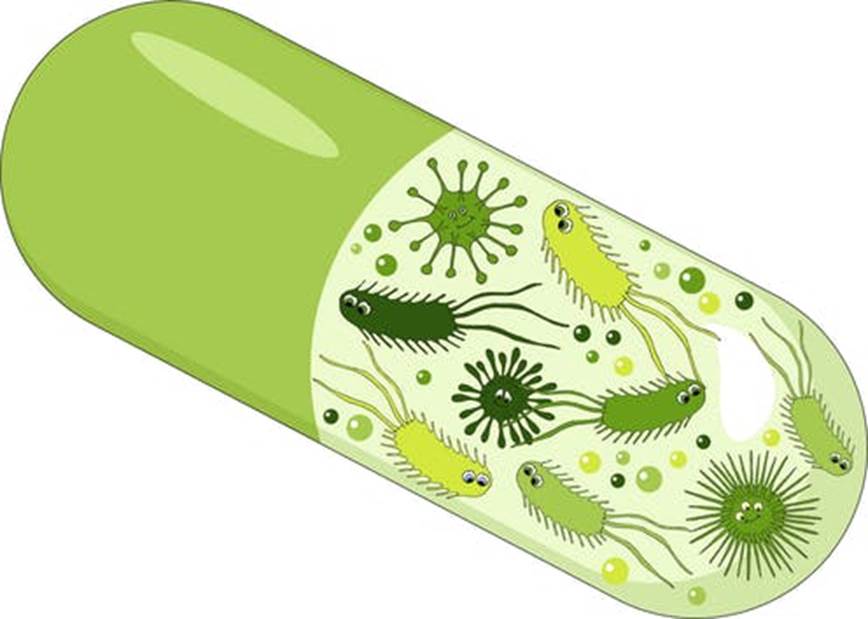 What is a bio-logic? If someone has diabetes because their body does not produce enough of the hormone insulin, the simplest treatment is to just give insulin to the person. It sounds like simple logic, doesn’t it? Unfortunately, that is where the simplicity ends. Biologically derived molecules, also called biologics, like insulin, antibodies, and vaccines are such complex molecules that they cannot be synthesized chemically. Did you know, only 40 years ago, people with diabetes were treated with insulin that was derived from the pancreas of animals like cattle, pigs and dogs! Nowadays we have much better ways of producing large amounts of biologics. Scientists have cracked this bio-logic problem by using some clever bioengineering to convince simple microorganisms to be our allies in (bio-logic-ally!) producing these biologics for us.
What is a bio-logic? If someone has diabetes because their body does not produce enough of the hormone insulin, the simplest treatment is to just give insulin to the person. It sounds like simple logic, doesn’t it? Unfortunately, that is where the simplicity ends. Biologically derived molecules, also called biologics, like insulin, antibodies, and vaccines are such complex molecules that they cannot be synthesized chemically. Did you know, only 40 years ago, people with diabetes were treated with insulin that was derived from the pancreas of animals like cattle, pigs and dogs! Nowadays we have much better ways of producing large amounts of biologics. Scientists have cracked this bio-logic problem by using some clever bioengineering to convince simple microorganisms to be our allies in (bio-logic-ally!) producing these biologics for us.
In this project we will be hijacking our own bacteria to produce some interesting biomolecules. One of these biomolecules even glows under UV light! We will hack into the genetic code of bacteria to engineer it to produce our protein of choice. Next, we will test what are the best conditions that keep our bacteria happy to produce large amounts of this biomolecule. We will finally extract and purify the biomolecule and check its activity to ensure it is of a high-quality. If you want to learn how to make your own personal biomolecule, join this project and become a biologically inspired engineer!
Sindhuja Sridharan
GSK-EMBL Heidelberg, Germany
Sindhuja Sridharan is from India. She moved to Singapore for her PhD at the National University of Singapore. She is specialized in the field of biochemistry and molecular biology. Presently, she is a postdoctoral research fellow working jointly with GSK and EMBL in Heidelberg, Germany. Her interests are to understand how proteins communicate within cells so that one day she could paint the molecular picture of these minions talking to each other. She likes hiking, painting, reading and playing tennis during her leisure time.
Srinath Krishnamurthy
KU Leuven, Belgium
Srinath Krishnamurthy is a postdoctoral research fellow at KU Leuven in Belgium. He is a biochemist with a specialisation in protein dynamics, or as he likes to think of it, ‘life’s molecular dance’. He completed his PhD from the National University of Singapore in Singapore, then decided he needed to experience a real winter and headed to Belgium! In his spare time, he enjoys tennis, playing the guitar, reading and hiking.
Understanding language: Mind vs Machine
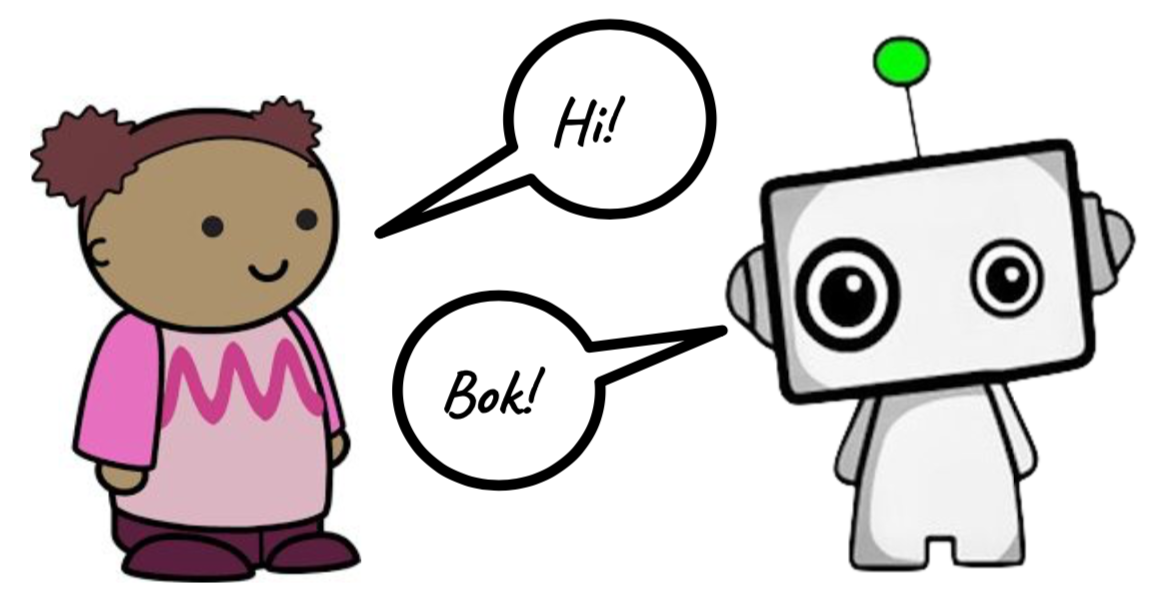 Have you recently talked to a computer? Ever asked a digital assistant to tell you a joke, or to navigate you home, or asked for a translation of the menu in the restaurant abroad? You’ll probably have noticed that computers have made some progress in understanding human language, but they still can’t do as well as other humans. We want to find out what the difference is between a human’s and a computer’s brain and how they process and represent language.
The mind: By recording the activity of different parts of brain while a human listens to speech, we can learn how the brain processes language. This allows us to explain e.g. why learning a new language is easy when we are young, but gets harder when we get older.
The machine: The main ingredients for Artificial Intelligence (AI) are neural networks and machine learning algorithms. With those, computers can learn how to represent words in a context, how to interpret a spoken signal, and how to translate.
Have you recently talked to a computer? Ever asked a digital assistant to tell you a joke, or to navigate you home, or asked for a translation of the menu in the restaurant abroad? You’ll probably have noticed that computers have made some progress in understanding human language, but they still can’t do as well as other humans. We want to find out what the difference is between a human’s and a computer’s brain and how they process and represent language.
The mind: By recording the activity of different parts of brain while a human listens to speech, we can learn how the brain processes language. This allows us to explain e.g. why learning a new language is easy when we are young, but gets harder when we get older.
The machine: The main ingredients for Artificial Intelligence (AI) are neural networks and machine learning algorithms. With those, computers can learn how to represent words in a context, how to interpret a spoken signal, and how to translate.
Mental representation of words (project leader: Mirta Zelenika): Our goal will be to find out how the language is processed in our brain. In order to do that, we will learn how to use an EEG to record mental activity. This will not be an easy job: EEG records a lot of noise, so a big challenge will be to find the signal in that noise. Once we find the signal, we will be able to explain how our brain knows the difference between speech sounds and some other sounds.
Language processing with machine learning (project leader: Julia Kreutzer): In this project, our goal will be to teach computers how to understand human language. In order to do this, we will use machine learning, a special family of algorithms that allow us to train computers for arbitrary tasks. For example, we can teach a machine to generate jokes, by showing it many examples of funny jokes. In particular, we will focus on artificial neural networks, which were inspired by the architecture of the brain. The final goal will be to teach a computer how to translate between languages - build our own translator!
Mirta Zelenika
University of Zagreb & SUVAG, Croatia
Mirta is a psychologist at the Polyclinic for the rehabilitation of speech and hearing SUVAG and a researcher at the Faculty of Electrical engineering and Computing at the University of Zagreb. She did her Ph.D. at the University of Zagreb, in the field of Language and Cognitive Neuroscience. In her research, she is working with electrophysiological measures to examine different aspects of cognitive functioning in humans. She likes to spend her free time hiking in the mountains, she enjoys meeting new people and exploring new places.
Julia Kreutzer
Google AI, Canada
Julia is a researcher at Google AI in Montreal (Canada). With her research she aims to improve automatic translation systems. She did a PhD in Heidelberg (Germany) in Computational Linguistics, a field that combines computer science with linguistics (which she chose because she liked both languages and math at school). Apart from programming and machine learning, she’s passionate about all kinds of outdoor sports, baking bread, and playing the cello.
Mmmmh: a quest for the tasty microbes
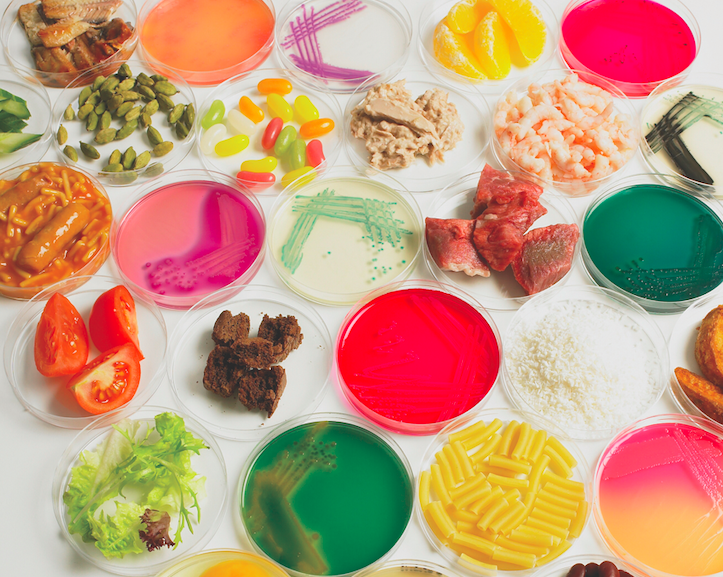 Microbes are all around us. Although they are by definition invisible to the naked eye, there are far more microbes on earth than any other forms of life and they have been around for billions of years before the advent of multicellular life. We are born, we live, and we die in their world. It is unfortunate that we typically hear bad things about them when microbes cause disease (think of the latest coronavirus outbreak in China), because the truth is that the vast majority of them are harmless to us humans.. and many are actually extremely beneficial. Did you know for example that many of the finer foods that we enjoy would not exist if it was not for the help of our little friends - the microbes?
Microbes are all around us. Although they are by definition invisible to the naked eye, there are far more microbes on earth than any other forms of life and they have been around for billions of years before the advent of multicellular life. We are born, we live, and we die in their world. It is unfortunate that we typically hear bad things about them when microbes cause disease (think of the latest coronavirus outbreak in China), because the truth is that the vast majority of them are harmless to us humans.. and many are actually extremely beneficial. Did you know for example that many of the finer foods that we enjoy would not exist if it was not for the help of our little friends - the microbes?
To uncover them, we will explore the local markets to find common food staples and discuss these armies of microbial little helpers that make them so tasty and fluffy. Bread, kéfir, and yogurt are all examples of food that we'll investigate and where microbes play a key role. We will see that sometimes these little helpers are actually communities of different microbial species that work in team to ferment the food to our advantage. Also, as you have all probably “suffered” before, some microbes spoil our food or make it impossible to be in the same room as them due to their horrific smell. So, our exploration would be incomplete if we did not discuss those nasty critters too.
In this project we will learn about these microscopic organisms, where they fit on the tree of life, and start hunting for them in the various foods that we enjoy. We will use a set of laboratory techniques from the field of microbiology and molecular biology, and will take a dive into the field of bioinformatics and sequencing technologies to investigate the genomics of the various microbes we encounter.
Ana Lechuga
Autonomous University of Madrid, Spain
Ana is a doctoral student at the Autonomous University of Madrid in Spain. She is a biologist, specialized in virology who has always loved basic science. She is now trying to elucidate the interaction between bacteriophages and their bacterial hosts. Apart from doing and teaching science, she really enjoys evenings with friends, listening to music, reading, travelling and making cute things.
Cédric Lood
KU Leuven, Belgium
Cédric is a doctoral student at the interface between bioinformatics, microbiology, and molecular biology. His research is focused on using viruses to eliminate antibiotic-resistant bacteria that cause diseases in humans. He was formerly trained as a computer scientist and engineer, but developed a strong interest for the field of biology during a bioinformatics internship. Outside of the lab, Cédric enjoys learning about other cultures, globetrotting, and hugs.
Robots for everyone
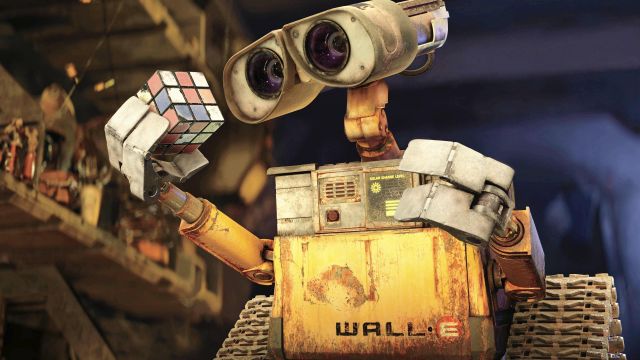 Imagine a very advanced alien civilization, observing the universe for the past million years or so. Our tiny rock we call home does not interest them that much. After all, the dominant life-form on this blue planet, some monkeys that recently started to wear shoes, has not even entered into interstellar contact. Because of this, the alien scientists are rather brief when it comes to us, their three-word summary of humanity on planet earth reads as follows: hunting - farming - factories. Now, I’d like to your draw attention to the duration of these periods: it took about 50.000 years before people got tired of running after their food. Then, it took another 10.000 years of farming until the industrial revolution 200 years ago changed the world once again, more or less to the state it is in today. Even the aliens, however unimpressed they may be, cannot deny that our progress is at least accelerating dramatically.
Imagine a very advanced alien civilization, observing the universe for the past million years or so. Our tiny rock we call home does not interest them that much. After all, the dominant life-form on this blue planet, some monkeys that recently started to wear shoes, has not even entered into interstellar contact. Because of this, the alien scientists are rather brief when it comes to us, their three-word summary of humanity on planet earth reads as follows: hunting - farming - factories. Now, I’d like to your draw attention to the duration of these periods: it took about 50.000 years before people got tired of running after their food. Then, it took another 10.000 years of farming until the industrial revolution 200 years ago changed the world once again, more or less to the state it is in today. Even the aliens, however unimpressed they may be, cannot deny that our progress is at least accelerating dramatically.
Why is this? Well, it is certainly not because humans now are inherently smarter or more skilled than their ancestors. For example, the ancient Greeks did absolutely brilliant mathematics but they also never managed to build a toaster. The true driving force behind this spectacular acceleration is information. Our ability to transfer information over time and space has grown tremendously. Book printing and the internet are two major milestones in this regard. This means knowledge became available to more people, faster, which in turn meant that more knowledge and new ideas were generated faster, which also got transferred faster, and so on. This self-amplifying process is what drives humankind’s ever faster progress.
This project is a testimony to that central point. Based on knowledge freely available on the internet, an intelligent teenager today is perfectly capable of completely understanding all the maths, physics, engineering and computer science necessary for building an autonomous robot. Concretely, the end goal of this project is a miniature self-driving car that learns to drive itself around a track, based solely on images it recorded by its own camera. In order to do so, we’ll have a look at 17th century maths (basic calculus), 19th century physics (electricity & magnetism) and lastly, 21st century computer science (artificial intelligence). Also, we’ll build this thing for real using a raspberry pi, which means we should know a thing or two about practical engineering. Such an effort of collecting, sharing, using, and improving knowledge is the core of that what we call science. Not even 15 years ago, this project would have been borderline impossible, today all you need is a curious mind, an internet connection and (perhaps) some minor guidance, all of which are in ample supply in Požega.
Elia Van Wolputte
KU Leuven, Belgium
Elia is a PhD student at the University of Leuven in Belgium, where his research is about Machine Learning. Before, he studied AI at KU Leuven and Physics at Ghent University. His spare time is filled with culture, but mostly music. A lot of music. In fact: put him near any audio playing device, and he’ll start to DJ as soon as possible. He also enjoys film, art, literature and an occasional friendly game of basketball.
Workshops
Round table: HOW TO BECOME A SCIENTIST?
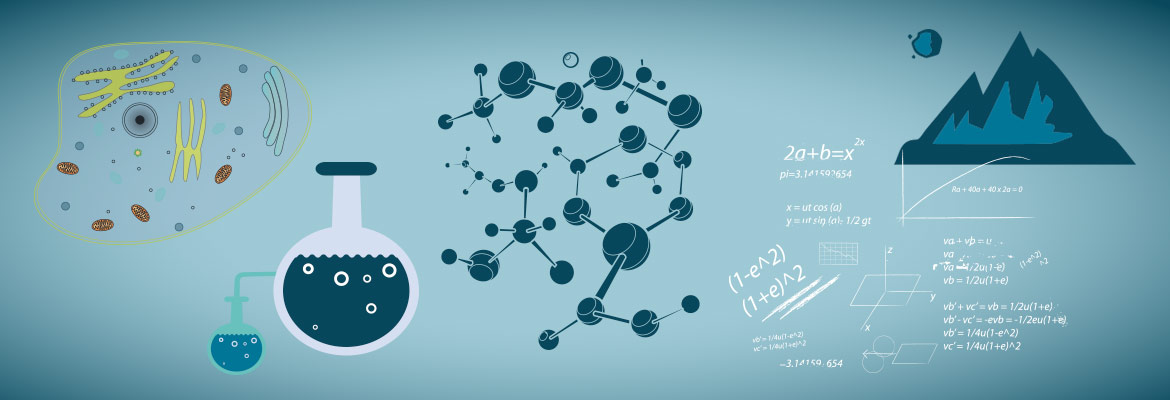 How does a path of becoming a scientist look like? Which university to choose and how do the study programs look like? How important is it to move across the borders of your home country for educational purposes, and at which point to do it? How does an everyday life of a scientist look like?
How does a path of becoming a scientist look like? Which university to choose and how do the study programs look like? How important is it to move across the borders of your home country for educational purposes, and at which point to do it? How does an everyday life of a scientist look like?
Inspired by the questions of our former participants, this round table aims to introduce you to the complex world of higher education one has to go through in order to become a scientist. Project leaders and organizers will share their unique scientific stories and experiences, as well as tackle all the questions you may have about your future studies and scientific career steps, hoping that having this expanded view on the scientific world will make it easier for you to make future choices.
Moderator: Mario Zelić, University of Zagreb, Croatia
Research swapshops
The rhythm of my mood
When we think about our emotions, we can probably imagine how we can feel various emotions in the same day – from sadness, anger and boredom to excitement, happiness and interest. Likewise, when we look at our mood during the week, we could say that on some days we generally feel better and on some days we feel worse. Psychological studies show that the rhythm of our mood varies during the week and during the day in a sinusoidal manner.
In this workshop we will measure our mood during one week by filling out a short mood questionnaire called PANAS. We will use the obtained data to conduct sinusoidal regression, which we will use to try to detect our own daily and weekly mood rhythms. We will compare our data to the data of previous studies on this topic.
Swapshop leader: Augustin Mutak, Psihometar, Croatia
Why Betelgeuse Will (Not) Explode
Betelgeuse is a red supergiant star in the constellation of Orion and it is one of the brightest stars in the night sky, usually sitting comfortably among the top ten brightest we can see. However, in late 2019 and early 2020, its brightness started to drop steeply and seemingly for no reason. At its dimmest, it dropped outside the top 20 on the list of brightest stars. This unprecedented dimming brought about a range of discussions about its cause, including talk of a potential supernova.
In this swapshop, we will explore stellar evolution and astronomical methods for measuring the temperature, size and composition of stars. We will use this information and data collected during Betelgeuse’s dimming to discuss possible (and probable) causes and decide whether we should worry about Orion’s shoulder going boom.
Swapshop leader: Laura Busak, University of Zagreb, Croatia
The (mathematical) sound of drums
Why do we enjoy listening to music? What goes into making a good song? Can we somehow describe this subjective art with exact math? Could we find a way to listen to a sine wave? How is any of this useful? Why is every topic in this swapshop phrased as a question and will we be listening to Britney Spears? Find out the answers to these questions in this very fun and surprisingly useful swapshop. We'll be exploring the relationship between music and mathematics and showing how such a relationship can go both ways.
Swapshop leaders: Mario Borna Mjertan & Ružica Radoš, University of Zagreb, Croatia
Frankenstein's lab
The crazy notion of cutting and opening an organism's body was considered madness in the past, but today is a go-to scientific method in studying internal anatomy and physiology of creatures. Through shapes of different organs, tissues and body parts we can observe and learn incredible amounts of information about animals’ behavior, diet, ways of reproducing and habitat they live in. Through internal anatomy scientists can analyze adaptations of organs and organ systems through different species on an evolutionary tree, providing them with deeper understanding of ways body works. Getting the technique right in the beginning allows biologists to use this method in different situations and adapt to different species.
We will play a role of crazy scientists and dissect some insects, worms and some other animals to observe their anatomy and physiology. We will learn how to prepare, put to sleep, dissect specimens under principles of bioethics. Information that we get from our specimens will be used to observe development of certain organ systems through the evolutionary tree. We will also learn about different adaptations some organisms have. This swapshop will provide students with experience in using different tools and appliances found in a lab, dealing with complex topics in easy ways and most importantly improvisation.
Swapshop leader: Davor Merkaš, University of Zagreb, Croatia
DNA as the guide of journey: DNA isolation, PCR reaction and its optimisation
The well-known fact is that the carrier of genetic information is DNA molecule, whose diameter is one-millionth part of a millimeter. How can we isolate it from a cell? How can we confirm the presence of DNA molecule in a tube? What are the questions we can ask and what answers can we get from reading sequences or from other analyses with this molecule? Can we multiple our sample and why managing that would be important for us too?
Workshop participants will have the opportunity to isolate DNA from bacterial cells. We will visualize our samples and see how DNA can become a simple strip on an agarose gel with the help of an electric field. Through discussion, we will get to know the basics of a PCR reaction and why it is revolutionary. Using bioinformatics tools, we are going to design some of the components needed for PCR reaction. Finally, with the help of computer simulation, we will go through all the steps and discover our results.
Swapshop leaders: Dunja Pavlović & Marija Nedeljković, University of Belgrade, Serbia
THE GRID: HOW A RIVER SPINS YOUR WASHING MACHINE
Electricity is one of those things taken for granted these days, along with household appliances, but have you ever wondered what makes this system work? Surely you have seen pictures of old windmills and water wheel mills designed to harness the power of wind or water and use it to perform work, and this is actually exactly the same as the way we produce electricity nowadays. In fact, what makes all your appliances run is the power of a river (or a heated steam stream) pushing against a turbine somewhere far away. In this workshop we will build a primitive electric generator and an electric motor and examine the way they work to see up close the process so ubiquitous in our everyday lives. Through discussion we will recreate the thought that went into designing various household appliances and see the many ways to use electric power. We will also get creative on the turbine-spinning side of the system and show how many different ways there are to get a wheel spinning.
Swapshop leader: Augustin Orešković, University of Zagreb, Croatia
Lectures
Lecture schedule
July 27th, 2020
Roman Jerala (National Institute of Chemistry & University of Ljubljana, Slovenia): TBA
August 1st, 2020
Jessa Bekker (Acapela, Belgium): You can say that again!
August 2nd, 2020
Lana Ceraj (University of Zagreb, Croatia): Cosmic beasts and how to find them
Date TBA
Saša Ceci (Ruđer Bošković Institute, Croatia): TBA
About the lecturers
Roman Jerala
National Institute of Chemistry & University of Ljubljana, Slovenia
Prof. Jerala is head of the Department of synthetic biology and immunology at the National institute of chemistry and a professor at the University of Ljubljana. His research is focused on signaling in innate immunity and synthetic biology. Prof. Jerala's work has more than 7600 citations, and is often published in high impact factor journals such as Nature Biotech, Nature Chem Biol, Nature Commun, JACS, Blood, etc. He is also an inventor of 25 patents over the past 10 years.
One of his most original achievement was the invention of a new principle for the construction of protein folds, called “coiled-coil protein origami”, based on the concatenated modular building blocks, which is also the topic of his recent ERC Advanced Grant project MaCChines. He is member of the editorial board of ACS Synthetic Biology, Journal of Biological Chemistry and Innate immunity, next to acting as a reviewer for the number of high impact journal papers, as well as for the EU and other international grants. He has been elected as EMBO member and member of the Academia Europaea. In synthetic biology community he is known as a mentor of Slovenian iGEM student research projects.
Jessa Bekker
Acapela, Belgium
Jessa Bekker is a machine learning researcher at Acapela, a European leader of voice solutions that creats personalized digital voices with personalized identities for all voiceless people, services, apps or devices that need to speak with high quality voices. She works on making these digital voices more expressive and controlling the speech style. She obtained her PhD in Computer Science at KU Leuven, Belgium. Her research focused on theoretical machine learning and she designed general algorithms for difficult learning settings. Apart from performing research, she loves talking about it. She has been an invited speaker for non-expert audiences and has been involved in a number of research workshops for children and young adults, including as a project leader for S3 in 2015!
Lana Ceraj
University of Zagreb, Croatia
Lana Ceraj is an astrophysicist involved in studies of distant galaxies using large radio interferometers, such as the Very Large Array in the USA. She finished her doctorate studies at the Physics department of the Faculty of Science at the University of Zagreb. In her focus are statistical studies of the origin of radio emission in active galactic nuclei, powerful emitters of light observable across the electromagnetic spectrum. In her talk, she is going to introduce the field of radio astronomy as well as the latest findings in the field of galaxy evolution and present the results of the CoSMass team working at the University of Zagreb.
Saša Ceci
Ruđer Bošković Institute, Croatia
Saša is a research associate at Ruđer Bošković Institute, Zagreb, Croatia where he works in the Laboratory for experimental physics. He received his PhD degree from the Faculty of Science, University of Zagreb in 2007 and went to University of Georgia, USA, for his postdoc in 2008. His field of work is physics of elementary particles and fields, specifically Hadron physics and resonance.
Saša is also a well-known science popularizer in Croatia. He wrote a book Silly-meter, or how wrong is to be wrong, where he tackles the problem of pseudoscience. Furthermore, Saša is also a host of a Croatian popular science show Third element where he talks with his guests about current scientific research topics.
For his contribution to science popularization, he has been awarded Croatian National Science Award in 2015.
